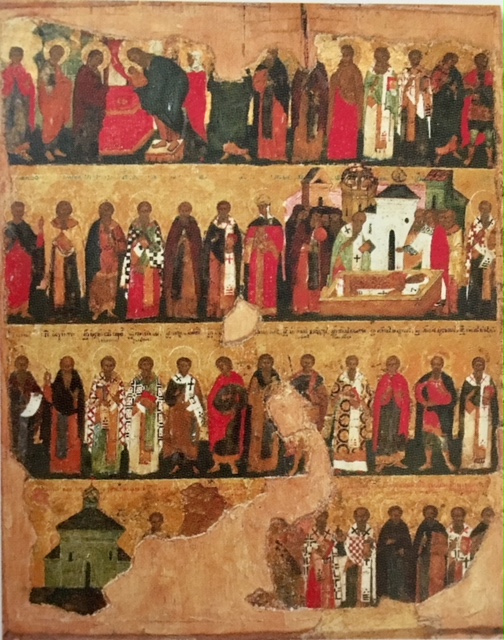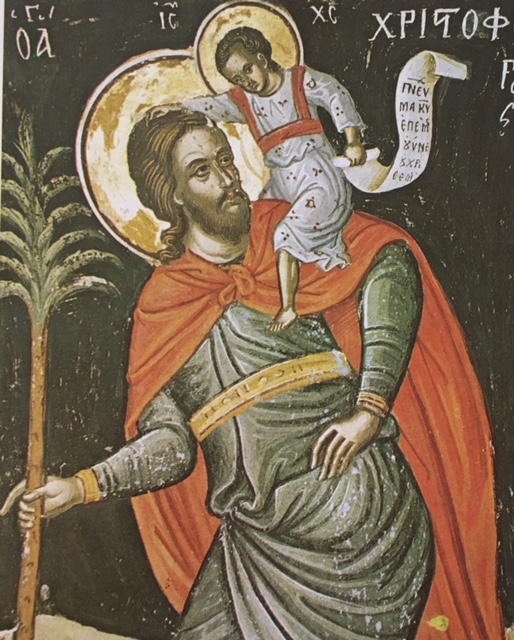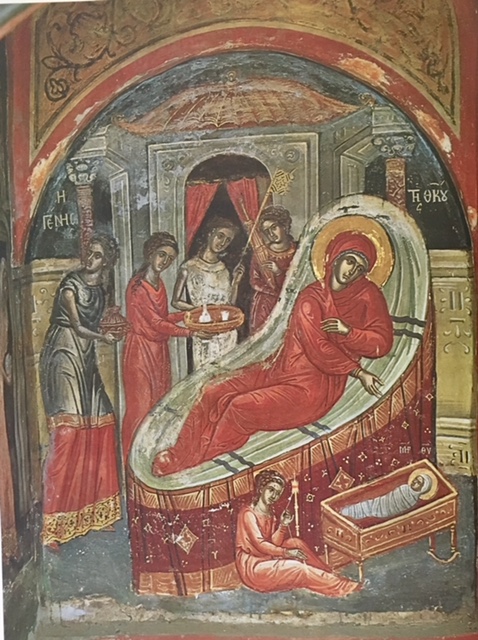The Month of February Calendar Saints from the book: “Masterpieces of Early Christian Art”, Richard Temple Gallery, London, UK

Writing Icons is a challenging task in many different ways. Learning from the past, incorporating the Traditions of the Church, and still being attentive to the spiritual ethos of our time in order to make Icons that are relevant to people today is a tall order. Icons are more than a spiritual painting
“The Icon is a kind of synthesis of the Spiritual truths and values of Eastern Christianity. It is much more than a religious painting, or a didactic aid. It is a sacramental medium, a meeting point between the Divine uncreated light and the human heart. Its visible, created beauty is aluminous epiphany, a ‘place’ of manifestation, where prayer gains access to the uncreated beauty of God’s grace and truth.” The Glenstal Book of Icons, Praying with the Glenstal Icons, Gregory Collins, OSB, the Liturgical Press
Theophanis the Cretan
As part of an ongoing series of looking at ancient Iconographers, this month the focus is on the Iconographer Theophanis , who painted many of the frescoes and Icons of the Holy Monastery of Stavronikita, Mt. Athos, Greece in the sixteenth Century.

A major source for this article is the book “The Cretan Painter Theophanis, the Wall Paintings of the Holy Monastery of Stavronikita” by Manolis Chatzidakis, Published by the Holy Monastery of Stavronikita, Mount Athos, 1986.
Theophanis was an Icon painter, trained in the Cretan tradition of wall and Icon painting. This style of Icon painting is considered to be a continuation of Palaeologan painting. However, the mature work of Theophanis encompassed both the Byzantine tradition and certain motifs from Venetian painting of the period. This contact with foreign Italian models of the 15th Century served to freshen the traditional compositions and add an emotional element without detracting from the essential dogma of the content.
“Theophanis lives within the eternal, changeless mystery of the liturgical life and experience of the Church and at the same time is a sensitive man of his own times. It is clear that he continues the Iconographic tradition that has passed through the splendor of the Palaeologan revival.” Archimandrite Vasileios, Abbot of the Holy Monastery of Stavronikita.

At times, the frescoes are painterly in execution, with less bold lines and rendered by brush strokes. In these works, the transitions of light are more gradual and subtle
In the handling of drapery, the accurate rendering of volume and movement through the interplay of light and dark tones. This creates a sense of rhythm that prevents the drawing from appearing mechanical.
In the Nativity of the Mother of God Theophanis renews the Iconographic type and style in his preference for Palaeologic models.

Icons help us remember the presence of the Trinity is always available to us. They serve as visual reminders that God’s light is perpetually shining on us.
Each Iconographer responds to the needs and dictates of his time, while simultaneously brining forward the Traditions of the Early Church. Theophanis is a wonderful example of an Iconographer who created a particular style of Iconography, authentic to his place and time.
May your Icons be blessed, there will be more articles next month.
Christine Simoneau Hales